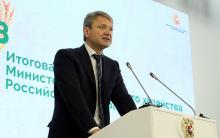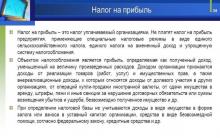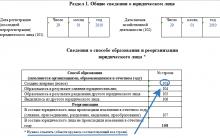, Moscow, Odessa, Kharkov, the Baltic states, Kazakhstan, Semirechenskaya oblast, Akmola oblast, Semipalatinsk, etc. In total, about 200 local censuses were organized from across the Russian Empire. In some provinces (Pskov -,; Astrakhan -, Akmola - and others), residents in all cities were copied. In and 1881, the population of the entire Courland, in Lifland and Estland provinces was enumerated.
Census Preparation
The census project began to be considered as early as a year. By the circular of the Minister of the Interior of March 11, 1895, in anticipation of the upcoming census, it was forbidden to carry out statistical work related to a population survey. On June 5, 1895, the census project was approved by the emperor and published as the "Regulation on the First General Census of the Population of the Russian Empire." General leadership preparatory work for the census was assigned to the Main Census Commission. From June 5, 1897, the development of census materials was transferred to the census department of the Central Statistical Committee of the Ministry of Internal Affairs.
List of questions
Processing of results and their reliability
A year after the census, CSK published "The population of the empire according to the census on January 28, 1897 in counties", which contained the preliminary results of the census. The census registered 125,640,021 residents in the Russian Empire.
The main results were published from 1899 to 1905 in separate 89 volumes (119 books) on the provinces and regions of the Russian Empire under the heading "The First General Census of the Population of the Russian Empire in 1897" (Edited by N. A. Troitsky), as well as in the form of a general imperial summary. Each issue includes a preface written by N. A. Troinitsky, “A Brief Overview of Digital Data for this Province” and the main statistical material collected in 25 tables. Thus, the publication of materials P. was completed by January 1, 1905, but even after that there are separate editions devoted to various aspects of the census: “Distribution of the population by type of main occupation and age groups by separate territorial areas” (1905); "The distribution of workers and servants by occupation group and place of residence based on the data of the First General Census of the Population of the Russian Empire on January 28, 1897." (1905) “Cities and settlements in counties with 2,000 or more inhabitants” (1905); "The number and composition of workers in Russia on the basis of the data of the First General Census" (1906), etc.
Of primary scientific interest are primary data - census forms. However, most of them were destroyed. The census lists for the Tobolsk and Arkhangelsk provinces have been completely preserved, partially for some provinces. The surviving census forms are stored in the federal archives in the funds of the Central Administration of the Ministry of Internal Affairs and the Main Census Commission and in the regional archives in the funds of the provincial statistical committees, etc.
The reliability of the census results has long been the subject of debate. When carrying out P. there were difficulties of an objective and subjective nature that adversely affected the accuracy of some of its results: fuzzy wording of several questions on questionnaires; there was a deliberate and unintentional distortion of information by respondents; there were errors when calculating and summarizing materials, etc. Therefore, some of the information collected by P.N. inaccurate, for example, information on military service, on religions, on side activities; on the ratio of the amateur and non-amateur population, etc. However, a comparison of the information of P. with the materials of zemstvo backyard censuses and administrative-police estimates, shows the discrepancy in the population as a whole by only a few percent, which indicates the high reliability of P. generally. Thus, P.N. provides valuable information about the size, composition and distribution of the population throughout the Russian Empire at the end of the 19th century. The census took into account the absolute number of the population, distributed by religion, estate, gender and age, marital status. Data were obtained on the literacy of the population, the number and size of farms employed labor force, the main occupations of the population, etc. The census for the first time gave accurate data on the absolute number of people in the Russian Empire. Detailed materials on sex and age and family distribution population allow you to calculate the most important demographic indicators.
Some census results
The census registered 125,640,021 residents in the Russian Empire, of which 16,828,395 people (13.4%) lived in cities.
10 largest cities by population, in descending order (thousand people):
In their native language, the largest language groups, in descending order, are Great Russians (Russians) - 44.3%, Little Russians (Ukrainians) - 17.8%, Poles - 6.3%, Belorussians (Belarusians) - 4.3%, Jews - 4.0%.
The largest classes, in descending order: the peasantry - 77.5%, petty bourgeois - 10.7%, foreigners - 6.6%, Cossacks - 2.3%, nobles (hereditary and personal) - 1.5%, clergy - 0 , 5%, honorary citizens (honorary and personal) - 0.3%, merchants - 0.2%, others - 0.4%.
Medal "For the works of the first General Census of 1897"
To award the census participants on November 21, Nicholas II instituted the medal “For Works on the First General Census of the Year”.
Medal for award to both sexes:
1) those who have assumed the duties of counters free of charge;
2) those who took part in the census production as general and local managers or direct executors, as well as those who contributed to their success by their labor or assistance. ” The military, acting as counters, also received a medal.
The medal "For the works of the first General Census of 1897" was minted at the St. Petersburg Mint. However, several types of this coin are privately minted. The medal was minted in dark bronze with a diameter of 29 millimeters. On its front side between two laurel branches there is a monogram of Nicholas II under the imperial crown and a circular inscription: "The first general census of the population." On the flip side there is only an inscription in five lines: "For the works of the first general census of 1897."
The private coinage medal was both dark bronze (copper) and light bronze with a diameter of 27 millimeters. They were somewhat different from the state coinage medal in the layout of the drawing and inscriptions. Demand for this medal turned out to be very large, and the St. Petersburg Mint minted only 95 thousand of dark bronze, so the variety of private coinage is quite large. There are medals made of white metal and even silver, with the stigma of the 84th test. These were made even smaller - 25 millimeters in diameter.
The medal was supposed to be worn on a white-azure-red ribbon with stripes of these colors of the same width, i.e. on the Russian state tape.
This medal was awarded to many prominent people who participated in the census free of charge, including A.P. Chekhov. True, out of modesty, the writer never once wore the medal he received, but it is stored in the Chekhov House-Museum in Yalta. Gurvich N.A. was awarded the medal "For Works on the First General Census of 1897" .
Literature
- The general set of empire results of the development of data of the first general census of the population, made on January 28, 1897 - St. Petersburg, 1905. T. 1, 2;
- Kadomtsev B.P. Professional and social composition of the population of European Russia according to the 1897 census. - St. Petersburg, 1909;
- Kotelnikov A. History of the production and development of the general population census January 28, 1897 - St. Petersburg, 1909;
- Novoselsky S. A. Review of the most important data on demography and sanitary statistics of Russia. - SPb., 1916;
- Litvak K.B. Census of 1897 on the peasantry of Russia (Source aspect) // History of the USSR. - 1990. - No. 1;
- Ananyeva O. The First General Census in Russia.
External links
- The results of the first general census of the population of the Russian Empire in 1897 on Demoscope.ru
- Tables for classes from the censuses of the Russian Empire in 1897 and Moscow in 1902
- The number and composition of workers in Russia on the basis of the General Census of the Russian Empire in 1897. Volume 1. St. Petersburg., 1906
Dear website users!
One of the most popular areas of pedigree studies is working with census forms of the First General Census of 1897 It's no secret that these valuable materials have been preserved in three counties of the Vyatka province (Yelabugsky, Sarapulsky and Glazovsky) and published for viewing on the FamilySearch website.
Some users actively publish typed lists of personalities on the pages of settlements. But an unorganized approach complicates the census search.
Therefore, I propose to organize work on the section for a convenient search for cases, settlements, and, subsequently, on the input of personalities.
A start
To start this venture, an inventory was made of all microfilms and cases from the 1897 Census from the Central Administration of the UR (377 microfilms). A total of 329,994 slides were viewed fluently. The 377 microfilms contain sheets of 1,124 cases, some cases are divided between two microfilms.
| Archive | Fund | Inventory | A business | Manuscript location | Case title |
|---|---|---|---|---|---|
| TsGA UR | 5 | 1 | 1745 | Glazov district zemstvo government of the Vyatka province | Kytmanovo, Vaulino (Kostin identity), Vaulino (Gribanov identity), Kotegovo
|
Important Notice: To work with FamilySearch, you must be a registered and authorized user on it!
This section is under development, report all comments and suggestions in the comments.
Further work
It is necessary to decide how we will move on. It seems to me that in the end we should create some semblance of a list of settlements with an indication of the start and end pages for a given settlement within the framework of the case and microfilms. At the same time, each page can be filled with a recruited list of residents.
But now we are at the very beginning of the journey. There are a number of important unresolved issues:
1. Missing in microfilms at least one thing - 236-1-179 . At the same time there is a description of the case on the GASUR website (link). You need to find it somewhere.
2. There is no information on the GASUR website for affairs 236-1-348a and 236-1-432A . Perhaps these cases have a different number now?
3. There is no information on the GASUR website for 28 cases starting from 236-1-630 by 236-1-655 . A similar situation as in the previous case - these cases are likely to be stored under a different number, or information about them has not been added. Need to figure it out!
For some reason, long names of cases on the GASUR website are cut off. Syy helped in the collection of thirty headings of census cases from the GASUR website.
UPD 03/24/2018: An inventory of 15 microfilms (76 cases) for the Yelabuga district (fund R-1655) has been added to the section.
UPD 03/25/2018: Thanks to the user, it became known that after microfilming cases for FS there was a change in the numbering of cases. Because of this, some of the cases in our section have a “foreign” description. The correspondence table of old and new cases is in a scanned form, so in the near future I will be engaged in updating the inventory.
UPD 03/28/2018: The problem detected on March 25th has been resolved. It turned out that in In 2000 (after microfilming) the scientific processing of the fund was carried out, case numbers were changed, some of them were dropped out to another fund 247.Therefore, I reconciled the old and new No. of affairs for 236 funds. Now, when switching to FS, the case numbers will not coincide, but the cases will be necessary. Added and manually matched cases from 247 funds.
Materials of the first and, alas, the only one in pre-revolutionary Russia All-Russian Census population January 28, 1897 are one of the most valuable sources of genealogical and biographical information. Because, firstly, the questionnaires included questions covering a wide variety of spheres of life and activities of census participants. And, secondly, because in most provinces Russian Empire the materials of this census were subsequently destroyed, and where they were preserved (in regional archives, for example, in the former Arkhangelsk and Tobolsk provinces), their safety often leaves much to be desired.
The initiator and inspirer of this census was the famous Russian geographer, statistician and traveler P.P. Semenov-Tyan-Shansky (1827-1914), and the "Position of the First General Census of the Population of the Russian Empire" was highly approved two years earlier, on June 5, 1895.
It is noteworthy that this census was carried out at the very beginning of the reign of Nicholas II, who took part in it as the “Master of the Russian Land” (that was his answer to the question about occupation) and “The First Nobleman” (the Tsar’s answer to the question of estate) . By the way, the population of the Grand Duchy of Finland outside Helsingfors (now Helsinki), which was part of a united and indivisible Russia at that time, did not fall into this census.
The "Forerunner" of the First All-Russian Population Census of 1897 was the revision of the submitted population of Russia, the foundation of which was laid back in the time of Peter the Great in 1719, and the last, tenth, took place during the reign of Alexander the Second in 1858. Thus, it becomes clear that a large-scale registration of the population (if you do not take into account the constantly updated family lists compiled by volost boards) in the post-reform period, that is, after the abolition of serfdom, was not in Russia. The famous Russian right-wing historian and publicist S.S. Oldenburg (1888-1940) subsequently wrote on this subject:
“Previously, back in the period of serfdom, there were only very imperfect“ revisions ”... It turned out, however, that approximate statistical registration of the population by government bodies was only slightly behind reality: about 120 million people were“ officially ”considered, it turned out 126, 4 mil . (not counting two and a half million inhabitants of the Grand Duchy of Finland). ”
In fairness, however, it is also worth noting that the census project has been under consideration since 1874, which fit perfectly into the outline of the whole complex of reforms carried out at that time by the government of Alexander the Second. In the final stage of preparations for the upcoming census by the special Circular of the Minister of Internal Affairs I.N. Durnovo (1834-1903) dated March 11, 1895 was forbidden to perform statistical work, one way or another connected with surveys of the country's population. At the same time, the Main Census Commission was called upon to manage the preparatory work.
It is interesting that the data of the First All-Russian Population Census was supposed to be processed by electric calculating machines (first used in the North American United States during the 1890 census), for which censuses of three forms were provided - letters "A", letters "B" and letters " IN". The first was intended for the census of participants in rural societies (peasant farms), the second - for landowners and private houses, and finally, the third - for urban residents (the so-called "apartment houses"). A form census formapproved by the aforementioned “Regulation” contained 14 paragraphs, including the following: name, marital status, (kinship) relation to the head of the household, etc.
In addition, information was provided on the gender, age and estate or status of the census participant, as well as on his religion, place of birth, etc. Even physical disabilities of the participants were taken into account, which had never happened before.
According to S.S. Oldenburg, this census, which was one of the many achievements of the latter in the Russian history of the reign, "gave a great deal of information about the religious and tribal composition of the population, about its activities, about the spread of literacy, etc."
The first All-Russian population census of 1897 cost the treasury seven million rubles. And its results were subsequently published in 89 volumes (a total of 119 books in 1899-1905, edited by N. A. Troitsky) under the title "The First General Census of the Population of the Russian Empire in 1897." Moreover, the first results (i.e. preliminary results) of this census were published by the Central the statistical committee The Ministry of Internal Affairs a year later in the report "The population of the Empire according to the census on January 28, 1897 by counties." By the way, the above data of Professor S.S. Oldenburg on the size of the population of the Russian Empire at the turn of the 20th century somewhat disagree with official data, according to which at that time 125,640,021 people lived on one sixth of the Earth. However, this is easy to explain - the capital work “The Reign of Emperor Nicholas II” was written by S.S. Oldenburg emigrated almost three decades after the events described and was first published only in 1940.
It is clear that, like any “not yet run-in” project, the First All-Russian Census of 1897 had its own shortcomings and errors. For example, in the Central Asian possessions of the Russian Empire, this census was not accurate, and in some cases the errors mentioned are very significant (including due to illiterate scribes and their respondents). We are now talking about the fact that in some areas of Central Asia (Semirechensky, Syr Darya), Kazakhs and Kyrgyz were considered as a single nation, while in the same Syr Darya region, for some reason, Turkmens and Tajiks were united and, moreover, both peoples were attributed to the Indo-European language family, etc.
The latter, however, does not in any way detract from the merits of (voluntary) enumerators or “enumerators”, who often also worked at no cost. By the way, there were about 150,000 people in all, such counters, and one of them was the famous writer Anton Pavlovich Chekhov. And in commemoration of their merits, on November 21, 1896, the Bronze Medal “For the Works of the First General Census of 1897”, intended for both sexes, was supremely established. In addition, she was awarded the military, who were entrusted with the duties of scribes.
In conclusion, a few words about how this census was perceived on the ground. So, rumors circulated then among the population that the ultimate goal of this census was the introduction of new taxes and the relocation of the population to empty Siberian lands, and in some cases as a signal of ... the coming of the Antichrist himself.
Nevertheless, the preserved sheets of primary census materials (i.e. those sheets where information about the inhabitants of the country were directly entered) are the most important genealogical sources. Some of them (in the Ryazan province) are laid out in.
General Census of 1897, the first and only census of pre-revolutionary Russia.
Although population counting has been practiced in Russia since the time of the Tatar-Mongol yoke, the first and only census of pre-revolutionary Russia was the General Population Census of the Russian Empire of the year. Along with paid counters, free ones were involved, especially for which Nicholas II instituted this medal. The preparation and conduct of the first census included many representatives of the Russian intelligentsia and the noble elite.
On November 21, Nicholas II established with the highest command the medal "For Works on the First General Census of 1897" for awarding persons of both sexes.
The medal "For Works on the First General Census of 1897" was minted at the St. Petersburg Mint. However, several types of this coin are privately minted. The medal was minted in dark bronze with a diameter of 29 millimeters. On its front side between the two laurel branches is the monogram of Nicholas II under the imperial crown and a circular inscription: "The first general census of the population." On the flip side there is only an inscription in five lines: "For the works on the first general census of 1897." The private coinage medal was both dark bronze (copper) and light bronze with a diameter of 27 millimeters. They were somewhat different from the state coinage medal in the layout of the drawing and inscriptions.
Demand for this medal turned out to be very large: the St. Petersburg Mint minted only 95 thousand of dark bronze, so the variety of private coinage is quite large. There are medals made of white metal and even silver, with the stigma of the 84th test. These were made even smaller - 25 millimeters in diameter.
This medal was awarded to many prominent people who participated in the census free of charge, including A.P. Chekhov. The writer led a group of counters in the Serpukhov district of Moscow province.
In his letters, A.P. Chekhov very vividly conveyed his first impressions of the census: "January 11, Melikhovo. We have a census. They gave the counters disgusting inkwells, disgusting inkjack signs, similar to the labels of a brewery, and briefcases that they do not fit into censuses - and the impression is that the saber does not climb into the scabbard. Shame. In the morning I go around the huts, from habit I hit my head on the lintel, and how deliberately my head bursts hellishly: both migraine and influenza ... " On February 8, in a letter to A. S. Suvorin, he said: “The census is over. I was pretty tired of this business, because I had to count, and write painfully in my fingers, and lecture to 15 counters. The counters worked perfectly ... But "the Zemsky chiefs, who were entrusted with the census in the counties, behaved disgustingly. They did nothing, did not understand much, and in the most difficult moments were sick."
The hard, painstaking work of the counters served the good of the Fatherland. Suffice it to say that the census
The materials of the first and, alas, the only All-Russian population census in pre-revolutionary Russia on January 28, 1897 are one of the most valuable sources of genealogical and biographical information. Because, firstly, the questionnaires included questions covering a wide variety of spheres of life and activities of census participants. And, secondly, because, in most provinces of the Russian Empire, the materials of this census were subsequently destroyed, and where they were preserved (in regional archives, for example, in the former Arkhangelsk and Tobolsk provinces), their preservation often leaves much to be desired. .
The initiator and inspirer of this census was the famous Russian geographer, statistician and traveler P.P. Semenov-Tyan-Shansky (1827-1914), and the "Position of the First General Census of the Population of the Russian Empire" was highly approved two years earlier, on June 5, 1895.
It is noteworthy that this census was carried out at the very beginning of the reign of Nicholas II, who took part in it as the “Master of the Russian Land” (that was his answer to the question about occupation) and “The First Nobleman” (the Tsar’s answer to the question of estate) . By the way, the population of the Grand Duchy of Finland outside Helsingfors (now Helsinki), which was part of a united and indivisible Russia at that time, did not fall into this census.
The "Forerunner" of the First All-Russian Population Census of 1897 was the revision of the submitted population of Russia, the foundation of which was laid back in the time of Peter the Great in 1719, and the last, tenth, took place during the reign of Alexander the Second in 1858. Thus, it becomes clear that a large-scale registration of the population (if you do not take into account the constantly updated family lists compiled by volost boards) in the post-reform period, that is, after the abolition of serfdom, was not in Russia. The famous Russian right-wing historian and publicist S.S. Oldenburg (1888-1940) subsequently wrote on this subject:
“Previously, back in the period of serfdom, there were only very imperfect“ revisions ”... It turned out, however, that approximate statistical registration of the population by government bodies was only slightly behind reality: about 120 million people were“ officially ”considered, it turned out 126, 4 mil . (not counting two and a half million inhabitants of the Grand Duchy of Finland). ”
In fairness, however, it is also worth noting that the census project has been under consideration since 1874, which fit perfectly into the outline of the whole complex of reforms carried out at that time by the government of Alexander the Second. In the final stage of preparations for the upcoming census by the special Circular of the Minister of Internal Affairs I.N. Durnovo (1834-1903) dated March 11, 1895 was forbidden to perform statistical work, one way or another connected with surveys of the country's population. At the same time, the Main Census Commission was called upon to manage the preparatory work.
It is interesting that the data of the First All-Russian Population Census was supposed to be processed by electric calculating machines (first used in the North American United States during the 1890 census), for which censuses of three forms were provided - letters "A", letters "B" and letters " IN". The first was intended for the census of participants in rural societies (peasant farms), the second - for landowners and private houses, and finally, the third - for urban residents (the so-called "apartment houses"). And the form of the census form approved by the aforementioned “Regulation” contained 14 paragraphs, including the following: name, marital status, (kindred) relationship with the head of the household, etc.
In addition, information was provided on the gender, age and estate or status of the census participant, as well as on his religion, place of birth, etc. Even physical disabilities of the participants were taken into account, which had never happened before.
According to S.S. Oldenburg, this census, which was one of the many achievements of the latter in the Russian history of the reign, "gave a great deal of information about the religious and tribal composition of the population, about its activities, about the spread of literacy, etc."
The first All-Russian population census of 1897 cost the treasury seven million rubles. And its results were subsequently published in 89 volumes (a total of 119 books in 1899-1905, edited by N. A. Troitsky) under the title "The First General Census of the Population of the Russian Empire in 1897." Moreover, the first results (i.e. preliminary results) of this census were published by the Central Statistical Committee of the Ministry of Internal Affairs a year later in the report "The population of the Empire according to the census on January 28, 1897 in counties." By the way, the above data of Professor S.S. Oldenburg on the size of the population of the Russian Empire at the turn of the 20th century somewhat disagree with official data, according to which at that time 125,640,021 people lived on one sixth of the Earth. However, this is easy to explain - the capital work “The Reign of Emperor Nicholas II” was written by S.S. Oldenburg emigrated almost three decades after the events described and was first published only in 1940.
It is clear that, like any “not yet run-in” project, the First All-Russian Census of 1897 had its own shortcomings and errors. For example, in the Central Asian possessions of the Russian Empire, this census was not accurate, and in some cases the errors mentioned are very significant (including due to illiterate scribes and their respondents). We are now talking about the fact that in some areas of Central Asia (Semirechensky, Syr Darya), Kazakhs and Kyrgyz were considered as a single nation, while in the same Syr Darya region, for some reason, Turkmens and Tajiks were united and, moreover, both peoples were attributed to the Indo-European language family, etc.
The latter, however, does not in any way detract from the merits of (voluntary) enumerators or “enumerators”, who often also worked at no cost. By the way, there were about 150,000 people in all, such counters, and one of them was the famous writer Anton Pavlovich Chekhov. And in commemoration of their merits, on November 21, 1896, the Bronze Medal “For the Works of the First General Census of 1897”, intended for both sexes, was supremely established. In addition, she was awarded the military, who were entrusted with the duties of scribes.
In conclusion, a few words about how this census was perceived on the ground. So, rumors circulated then among the population that the ultimate goal of this census was the introduction of new taxes and the relocation of the population to empty Siberian lands, and in some cases as a signal of ... the coming of the Antichrist himself. Nevertheless, the preserved sheets of primary census materials (i.e. those sheets where information about the inhabitants of the country were directly entered) are the most important genealogical sources.











Comprehensive assessment of the socio-economic development of the region Volume of investments per capita
The statistics on housing construction in Russia show the stable development of wooden housing construction
On the consumer basket as a whole in the Russian Federation
On the consumer basket as a whole in the Russian Federation The law on the consumer basket in Russia
System of National Accounts